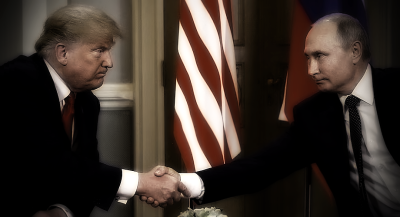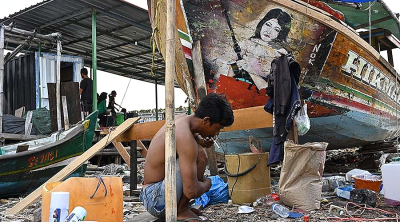
Positively, bailouts can be a considered remedy to save companies and industries whose demise might have dire metastatic consequences for the economy referred to as “systemic significance”. However, not all bailouts have the same circumstances and conditions. Therefore, policymakers must attach the sensibility tests and robust, strictly neutral, technocratic bailout framework to all government-led corporate bailouts.
Such stern mechanisms are essential to extinguish government-led bailouts’ main moral hazard danger—deterring the incentives and begetting more bailouts. Given that Malaysia’s corruption ecosystem is the only well-entrenched and thriving ecosystem we have, the government bailout moral hazard in our country can have a more explosive metastatic effect over and above any systemic benefits.
Even the international empirical evidence related to government-led bailouts suggests the phenomenon of yet another type of cartel—“bailoutpreneurs”.
Government-led bailouts were found to have lower post-bailout performance reversions than bailouts by other stakeholders (e.g., large owners, banks), and their announcements generate lower announcement returns than non-government bailout announcements.
At the same time, politically connected bailed-out companies exhibit significantly worse financial performance than their unconnected peers at the time of and following the bailout.
Notably, politically connected (but publicly traded) companies are also shown to have higher leverage ratios than their non-connected peers or, in other words, appear to be particularly favored by lenders.
And to enclose this mutually beneficial circle, politically connected companies are significantly more likely to be bailed out than similar non-connected companies.
In other words, the moral hazard risk abundant in the corporate world is multiplied times in the presence of government links and involvement.
In the corporate world, thanks to the presence of equity investors, the bondholders (entitled to fixed payments irrespective of the actual cashflows) are only concerned about the cash flows related to servicing the bond. On top of that, they are more inclined to extend credit to politically connected companies, possibly simply by coercion or being incentivised by the prospects of economic favour from the government or the eventual bailout. So by using public money to provide a lending facility that is more likely to be used to refinance or continue making interest payments on their existing debts, the government is bailing out the companies’ creditors.
Note how in the recent Sapura issue, the company is reported to be “saddled with RM10.3 billion in loans from nine[!] banks”, which is “more than the combined profits of all banks in Malaysia”.
Furthermore, once a company is in financial distress, the stockholders are tempted to play games at the expense of their creditors. For example, the stockholders will be less inclined to invest in a relatively safe (low-return) but the investment-intensive project (error of omission) because even if the project succeeds, the proceeds will be used mainly to pay the debtholders. Instead, they would be more inclined to take the money out, for example, to pay dividends. At the same time, they would be motivated to bet the creditors’ money on risky (potentially high-return) projects (error of commission). So, how does the government’s readiness to bail out (transfer public resources to wealthy risk-takers) adds to this hazard in government-linked companies?
Consistently, in the same Sapura Energy case, the group CEO is quoted to attribute “the decision [by the previous management] to aggressively bid for projects after the oil crash in 2014” to the current astronomic insolvency problem faced by the company.
One of the critical questions to be addressed before even considering a bailout is whether the moribund company is distressed only financially or also economically. In other words, whether there is a reasonable assurance that the company would be viable as a going concern, provided there is sound intervention. So that the rescuer oneself can recoup its investments in Net Present Value (NPV) terms or, at least, break even if we speak of the government—to safeguard the public good rather than possible narrow crony interests.
The bailed-out companies often have a variety of chronic financial problems inflicted by previous management waste, power abuse and reckless decision-making that cannot be salvaged despite an injection of public funds and as a result the problems are often recurring that may require more public funds to be injected afterwards.
While finding a successful example of the government-led bailout in Malaysia with companies being stabilized and invested peoples’ money recovered is pretty challenging, there is a galore of inefficient examples with completely opaque information on recouping invested public funds (Tabung Haji, Felda, Proton to name the loudest few).
In light of all the above, the former MP Rafizi Ramli’s call to enact a law that would strictly regulate public funds to bail out companies is timely and urgent before another whopping amount of peoples’ money is committed to the financing of recklessness.
The following are recommendations of what such a rigid bailout framework should possibly include:
- Requirement for and delineation of a transparent process of systematic assessment to certify how “systematically significant” and economically viable the bailed-out companies/industries are to qualify for the bailout in the first place, which can include but is not limited to the following: the number of jobs on the line, the number of investors among the public trusts funds, partners and other stakeholders negatively impacted etc. all with the solid number estimates backed by data;
- Requirement for a thorough forensic audit of book-keeping, capital management, governance structure, approval process, vendor payment process, etc;
- Attachment of a sound business turnaround/restructuring plan to a bailout package in line with company and industry prospects and NPV projections which will represent the conditional requirements, not recommendations, of how business model, mode of operation, corporate governance structure etc. have to be transformed to qualify for government support;
- Tying the bailout to a moratorium on dividend payments or share buybacks as well as bonuses and other type of remunerations to the top management and board of directors for the time while the company is benefiting from the government support;
- Curbing the excessive executive pay;
- Revision of long-term incentive plans and bonuses;
- Requirement of payroll maintenance;
- Demand that all creditors receive haircuts;
- Ousting the management who presided over the company descend and found guilty of mismanagement (that is why forensic audit is important) and imposing claw backs on their salaries and remunerations;
- Stipulation of the debt relief as the preferred bailout mechanism versus cash injections, and if cash injection then only in the form of a loan with strict covenant conditions to minimize the risk of misappropriation.
In summary, such framework shall deter moral hazard and protect recouping the government investment.
However, it also should not be viewed in isolation from the broader cohesive governance reforms and strategic planning. For example, how does the involvement of nine banks in Sapura Energy mess correlate with our country’s Sustainable Development Goals (SDG) agenda? Do we have SDG criteria in plans and blue prints only? Is there any regulation to control banks’ risk exposure to the climate change risks? If yes, how was it circumvented?
Malaysia has truly limited public resources. And, speaking of “systemic significance”, apart from enacting regulations, policymakers need to shift from investing in and rescuing those “too big to fail” projects to focusing on micro-investments instead. Rather than financing wealthy and reckless risk-takers, who don’t even bet their own money, use the same billions of ringgit to provide a helping hand to our Micro, Small and Medium Enterprises, who laboriously and honestly risk their entire livelihood. Cumulatively, this might have much greater systemic impact to Malaysia’s economy!
(Dr Rais Hussin and Dr Margarita Peredaryenko are part of the research team at EMIR Research, an independent think tank focused on strategic policy recommendations based on rigorous research.)
ADVERTISEMENT
ADVERTISEMENT







































